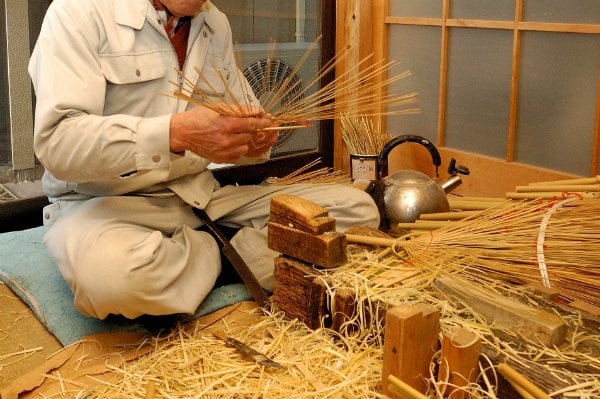Anatomy of a Traditional Fan

Uchiwa are even distributed on the streets as advertising tools when the temperature rises. As a common item in daily life, Chiba Prefecture’s one and only government-designated traditional craft, the Boshu uchiwa, is widely known across the nation.
The history of Boshu uchiwa can be traced back to the Edo Period (1603–1868). Back then, Boshu—now the southern region of Chiba Prefecture—was a producer of medake, a thin and supple form of bamboo that’s used as the main constituent of uchiwa.
According to a document compiled in Chiba Prefecture in 1911, uchiwa production in the Boshu region started in the southern town of Nagomachi in 1877. In a document published in 1918, it’s mentioned that in 1884 a man called Iwaki Sogoro of Nagomachi invited craftsmen from Tokyo to come develop uchiwa production as the major industry of Chiba Prefecture’s southern region. Boshu uchiwa output reached its heyday around 1935, with annual production reaching roughly 8 million units. Today, it is crowned as one of the three major uchiwa brands of Japan, and is considered a representative brand of Japan on the whole
https://www.youtube.com/watch?v=AfdQpU9z-9s
Boshu uchiwa take various forms: the standard round-shaped type; the “egg type,” which features a unique, smooth curve; and a long-shafted type, which allows the wielder to see the design move when it’s spun with the palms of the hands. Boshu’s status as a bamboo production district allows the use of high-quality bamboo to achieve these various shapes, conjoined with unique shafts that make the most of bamboo’s natural roundness.
Boshu uchiwa are hand-manufactured in a 21-step process that starts from the peeling of the bamboo. The handle is light and durable, and has a bone structure made by dividing one end of the shaft into 48 to 64 equal parts, woven together by yarn. Combined with a beautiful semicircle lattice design known as a mado, or window, this is an uchiwa that highlights the refined skill of the craftsperson.
Read full story: japan-brand.jnto.go.jp




